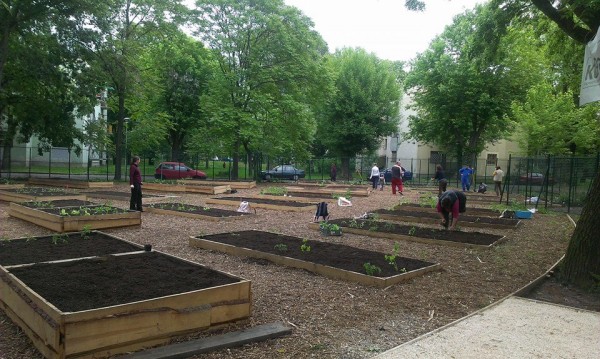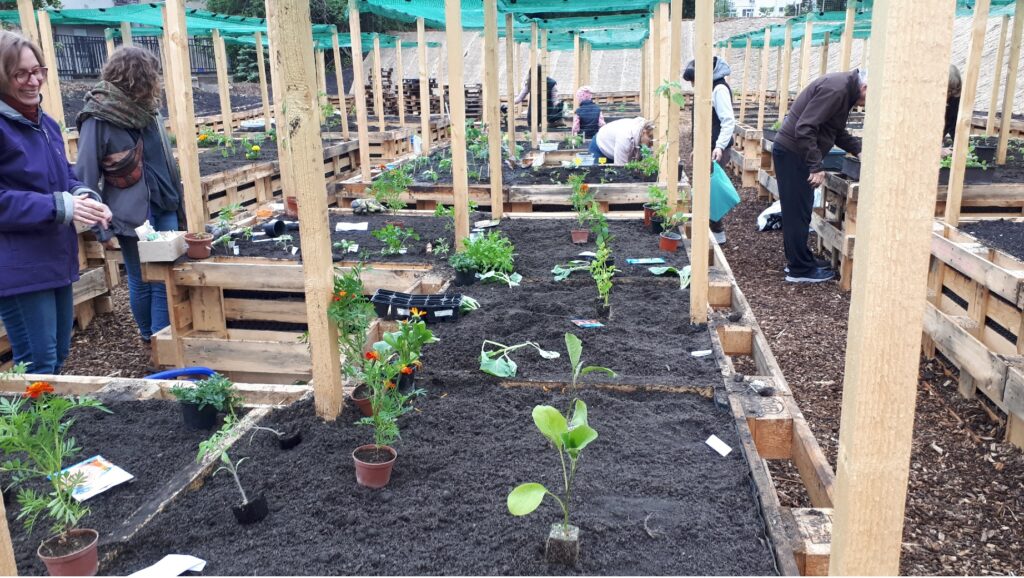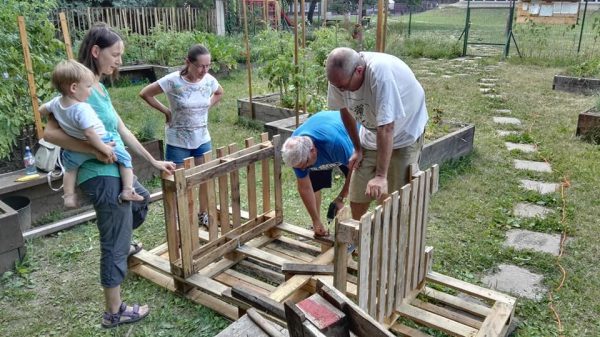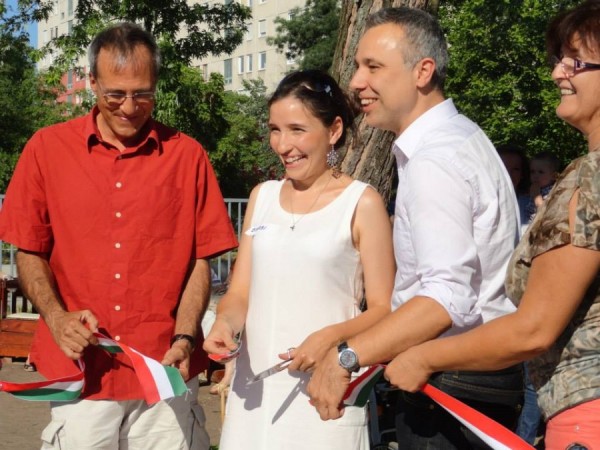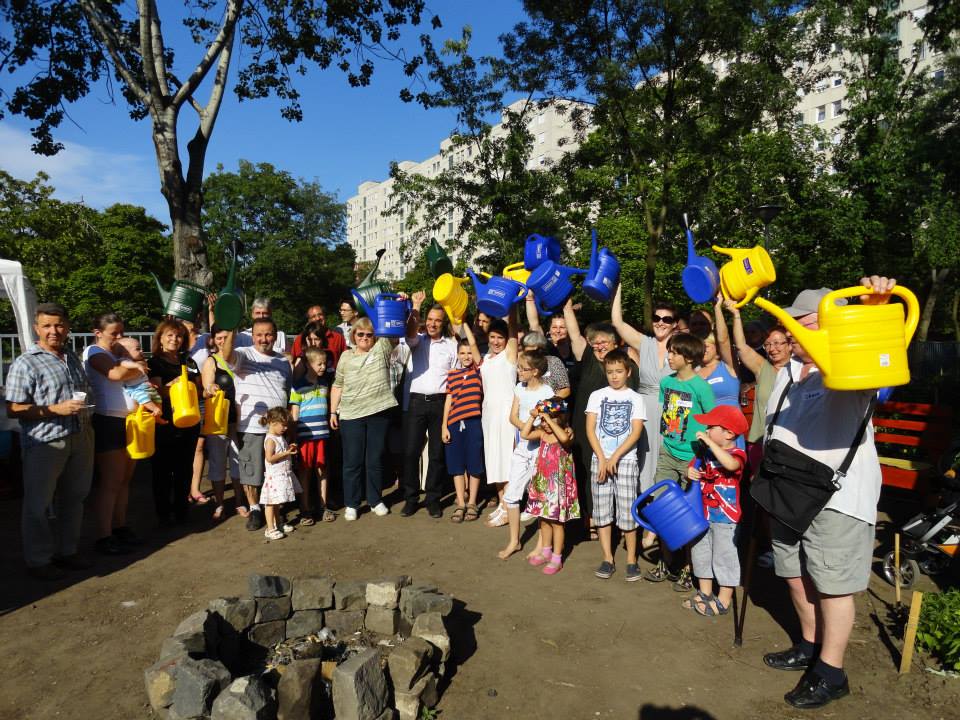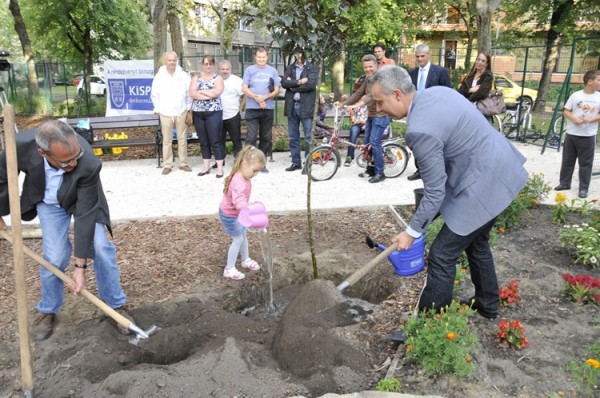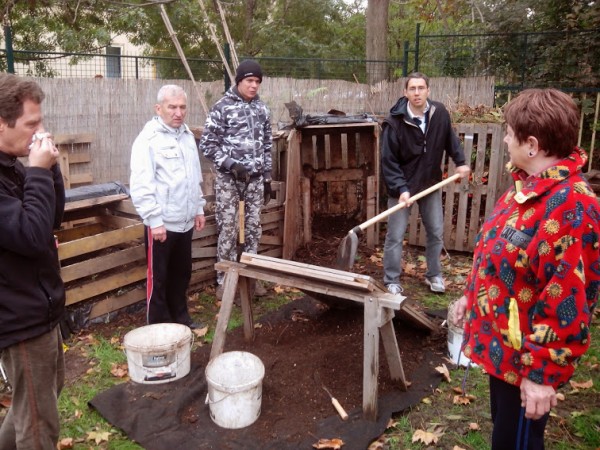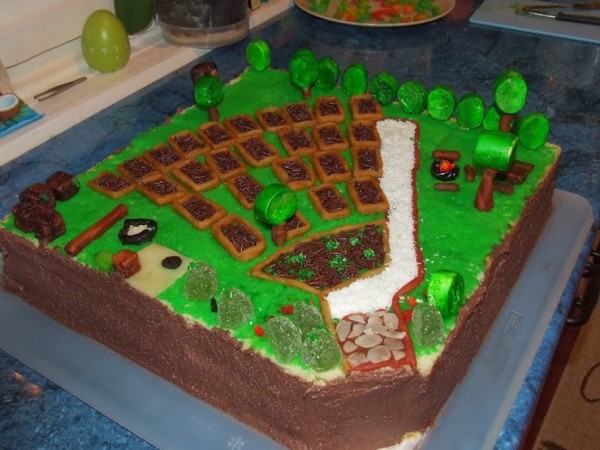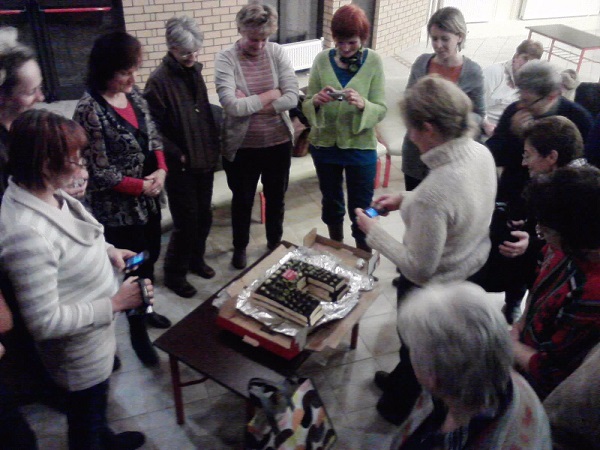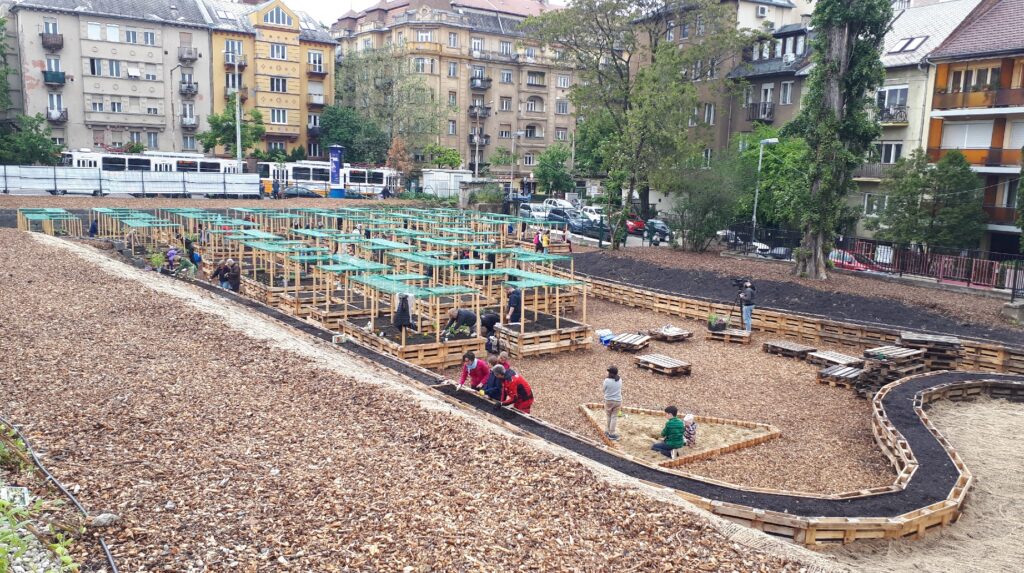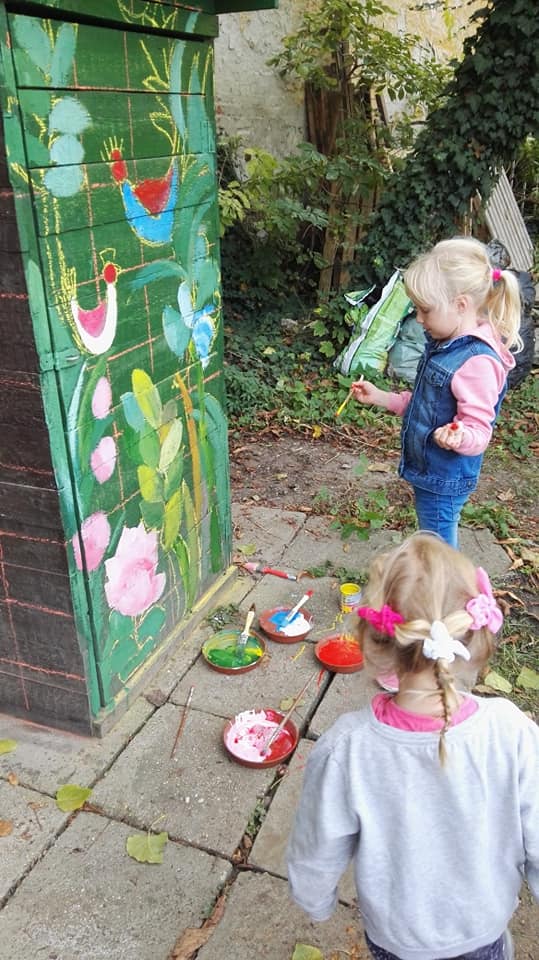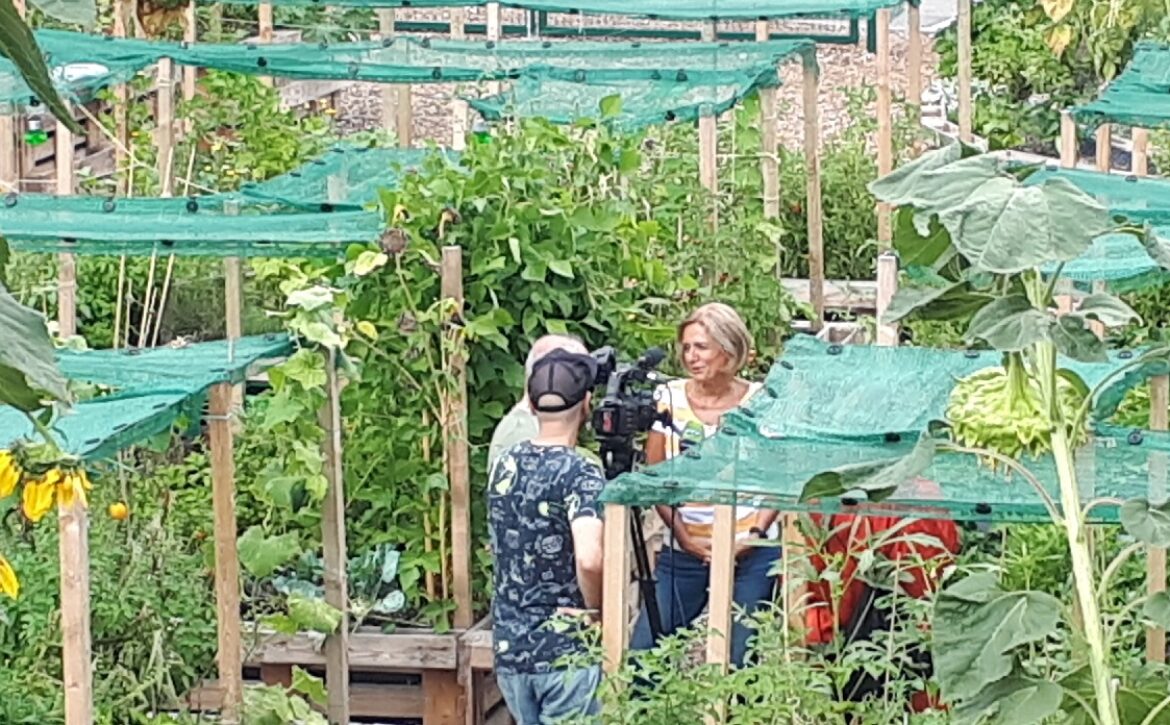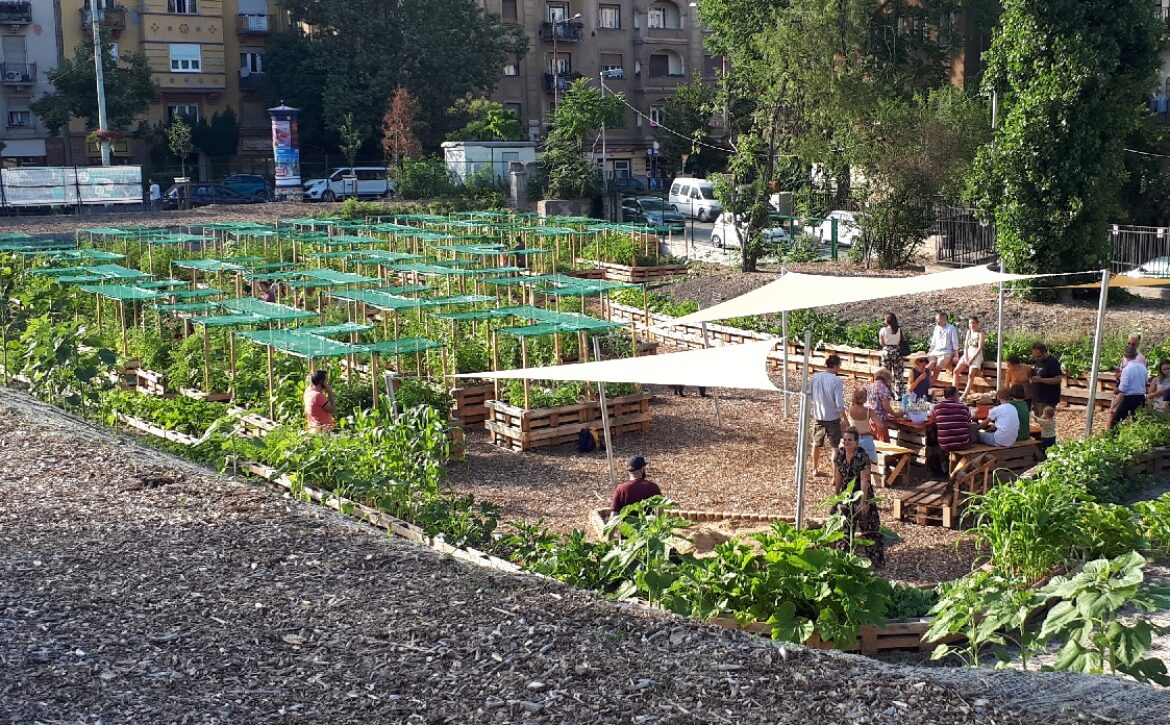Raised beds in Community Gardens
Design, construction, implementation, amortization, maintenance and replacement.
In community gardens, it is also important that the raised beds are evenly matched, the same size and shape. Everyone will have the same growing space, there is no debate about whether someone has a larger or smaller bed. The garden will not be uniform, commune-like, because each bed will be cultivated differently, planted differently, no two community garden beds will be the same.
In community gardens, the high beds are always cultivated by the same family, as long as they are members of the garden. We don’t change bed cultivators every year. If an urban gardener cultivates the same bed for years, he will pay attention to the maintenance of the bed and the quality of the soil in it. If we change the bed user every year, he will feel less ownership of it, he will not take care of it.
Positioning of high beds
It’s important to have a landscape architect design the garden, who will pay attention to the vegetation, the distance between beds, the walking surfaces. Every garden has an overall picture, and there will be central points in the garden, such as the community space, water taps, the area around the garden gate, etc. All the elements of the community garden need to be harmonised to create a well-functioning garden.
Raised bed designs
The distance between beds.
The experience is that there should be at least 1 metre / 3 ft between beds, partly to accommodate the lawnmower and for safety reasons, and partly to avoid shading the tall plants in the next beds.
Size of high beds
My gardens usually have 6-7-8 square metres of beds, mainly because in a 1000 square metre garden you need to be able to fit 25-30 raised beds, communal space and all the garden accessories. That’s how many beds can comfortably fit.
Beds should be 1.5 metres wide. This is important! Since you are not stepping into the beds, the arm’s length is the relevant distance, the reach-in distance. A width of 1.5 metres helps to cultivate from all sides. You can reach into the whole plot of the bed, for example to clear weeds. For the same reason, it is important that the bed can be walked around and cultivated from all sides.
The beds can be rectangular, but they can also be U-shaped or any arrangement the landscape architect can think of. For beds that are not the usual shape, make sure that you also keep the bed tidy, making it easy to mow or weed the lawn.
Material of raised bed
Most bed frames are made of wood, but they can also be built from demolished bricks, metal or recycled materials, or even prefabricated raised bed frames. In the Böszi Garten, the bed frames are made from pallets. This is also a good solution if you can get it cheaply.
Of the woods, acacia seems to be the most durable, but you can use pine, or more expensive denser woods, or even recycled woods. Be careful that if you use recycled materials, they are not contaminated.
Insulation of the raised bed
Be sure to treat the planks as well as possible against moisture before building the bed. Linseed oil, various stains, possibly tar. This should not be spared and should be repeated every 1-2 years, at least on visible surfaces. The problem is that the wet soil comes into direct contact with the wooden planks, so the wood material rots very quickly. Usually the inside of the bed wall rots and after 6-8 years the whole raised bed needs to be replaced.
Recently, we have started to use thick waterproof plastic sheeting in the construction industry, used to waterproof the foundations of buildings and to provide excellent separation of the wooden bed frame from the wet ground. This solution extends the life of bedding by levels.
Shadowing
In recent years, UV radiation has become so intense in summer that it can destroy plants, so it is worth putting Rascher netting over the bed. This is an industrial mesh, used on building sites or to make potato and onion sacks. It allows water to pass through, but it catches ice and, above all, it filters the sunlight to some extent, so that the plants do not burn in periods of heat and high UV radiation. Wooden poles are placed in the corners of the bed and the netting is stretched between them.
Filling of raised beds, layering.
It is advisable to fill the beds in layers. Tree branches on the bottom, twigs on top, then dry leaves, grass clippings, topsoil, compost and topsoil again. Over time, the bottom layers will start to compost, “blending” our topsoil. You should expect that this topsoil will become densified in the first few seasons, and you will need to ensure that the topsoil is refilled.
The areas around the beds
Whatever the size of the bed, the gardener will soon start to expand. This is what I call “land hunger”, and it is worth putting a stop to it very quickly, although it is impossible. Gardeners start planting outside the bed, in the nearby area of the bed, which takes away from the walking surface, makes it difficult to mow the walking surfaces, and I think it is also accident-prone, because there are so many children in gardens, they can easily trip over these plantings. It is worth discussing this together at the garden meeting and deciding together on the method and quantity of planting.
Blueprints and implementation
Böszi garden beds. The beds are made of pallets with strong insulation and Rascher mesh on top. In the third picture you can clearly see that the bedding is covered on the inside with plastic waterproofing sheeting, so that the wet soil does not come into contact with the wood. It will make the bed more durable.
In the Békási Garden we also used U-shaped beds. This created a compact, well cultivated bed. The garden is now 12 years old and the beds are starting to deteriorate. The community can renew 2-3 beds a year, so over time the entire bed stock will be replaced.
Finally
If you are establishing and building the garden in partnership with the local municipality, it is worth discussing with the municipality’s representatives to calculate all amortisation and include this cost in the annual green space maintenance costs.
Community gardens, in a sense parks, are urban green spaces. They may be cultivated by NGOs, but they are still part of the green spaces of the district or city. A smart municipality is one that helps communities to maintain a garden without too great a financial sacrifice. Replacing beds is usually beyond the financial tolerance of gardens, and municipalities should take this into account.












































































































































